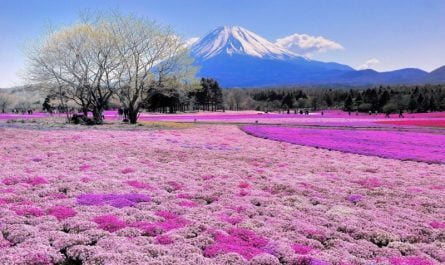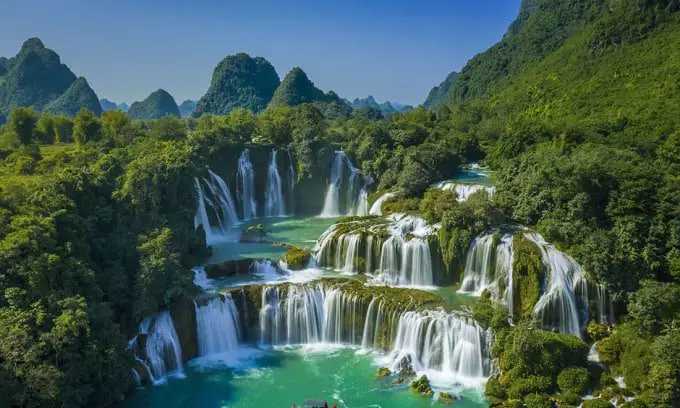In Part 1, Gloloy opened the door to The Strangest Natural Wonders in the World. Every landscape on Earth has its own unique features, right? Please continue to explore through the article below!
Thank you for reading this post, don't forget to subscribe!The Strangest Natural Wonders in the World
8. Tsingy Stone Forest, Madagascar
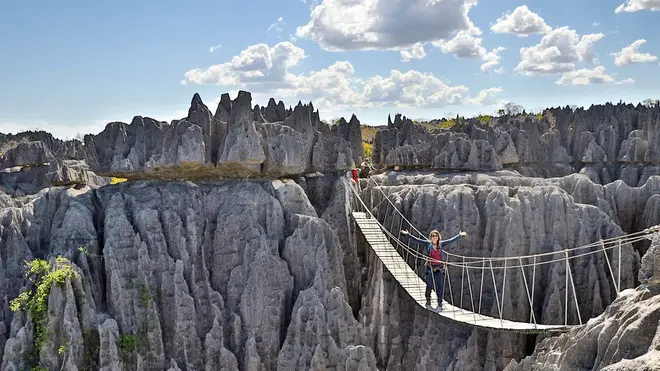
Tsingy Stone Forest is a famous place on the island of Madagascar because of its sharp, jagged stone towers up to 50m high. Over the course of millions of years, layers of shells and corals deposited on the sea floor over time have formed a single block of limestone. Then about 100 million years later, earth movements pushed giant blocks of limestone out of the sea. Under the influence of weather, the cracks in the walls formed and created the shape of Tsingy today.
Tsingy Stone Forest is divided into two areas, north and south. To the north is a nature reserve nearly 531 km wide. The remainder is Tsingy de Bemaraha National Park, 666 square kilometers wide, near the west coast of Madagascar.
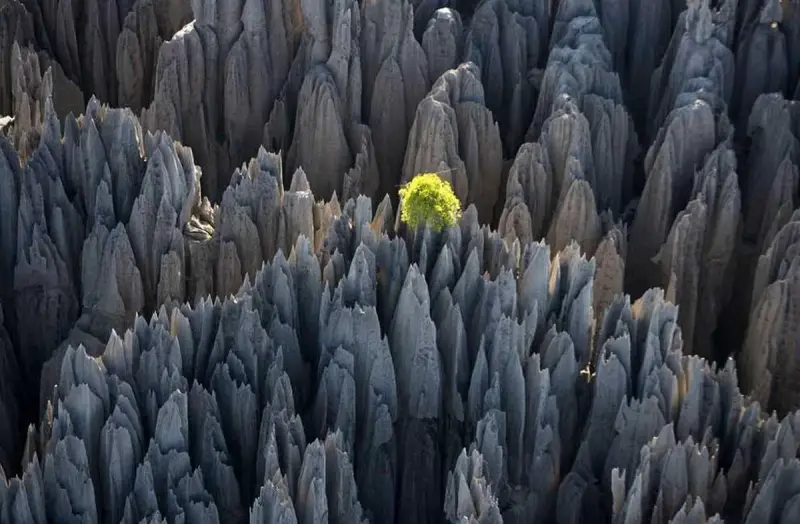
This area was recognized by UNESCO as a World Heritage Site in 1990 thanks to its unique terrain, mangrove forests and wild bird, gibbon and fox populations that need to be preserved. Tsingy Stone Forest is made up of many sharp limestone blocks like upside-down blades, more than 70 meters high, pointing straight into the air. There are not too many plants or animals living in this seemingly endless stone maze. About 200 million years ago, the forest was completely submerged in sea water and was only pushed up when geological fluctuations took place.
Over time, the limestone blocks were eroded by rain and wind, forming the sharp rocks they have today. These knife-sharp limestone towers can pierce objects with ease. This makes overcoming them extremely difficult and dangerous. Therefore, there are not too many tourists coming here to climb mountains.
9. Monolith columns, Siberia
Giant monolith columns in Siberia look like an art installation. However, these stone pillars are up to 60m high. Scientists believe that these seven stone columns were formed by erosion. However, these stone pillars are located in a grassland with no similar stone rows in the area for miles. They call it “Manpupuner stone row”. However, locals call it “Seven Strong Men”.

According to a local legend, the stone pillars were once the entourage of the Samoyed giants walking through the mountains to Siberia to destroy the Mansi people. However, the men were confronted by a white-faced magician, known as Yallingner, who turned all the warriors into stone. People see all the figures on these columns – the figure of a man, or the head of a horse or a sheep. These columns are called the “Seven Giants”.
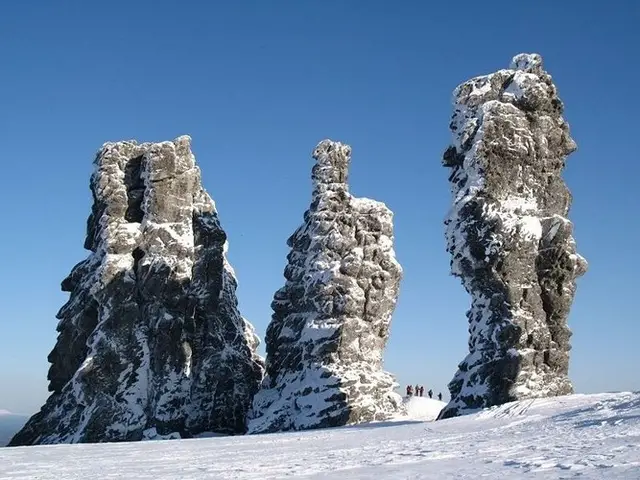
10. The World’s Largest Salt Cave: 3N Cave, Iran
Iran’s territory is largely comprised of jagged mountain ranges separating basins and plateaus. The densely populated western region is also the most mountainous with the Caucasus, Zagros and Alborz Mountains – the Alborz Mountains have Iran’s highest point, the Damavand Ridge at 5,604 m. The eastern region is largely uninhabited desert basins such as the saline Dasht-e Kavir, and several salt lakes and caves.

3N Cave in Iran is the largest salt cave in the world. Here there are salt crystals that look like stalactites in caves. The only thing is that these are salt blocks formed by heavy rains that carry salt into the cave. When huge volumes of salt were brought into the cave by rainwater streams, they quickly crystallized into crystal blocks with strange shapes in the cave.

11. Marble Caves: Among The Strangest Natural Wonders in the World
The giant marble cave at Lake General Carrera (South America’s second largest freshwater lake) in Pantagonia, Chile is formed from a block of hard rock. Initially it was a solid and solid block of limestone. Over millennia, waves have eroded this hard block of marble and turned it into a cave shaped like a honeycomb.
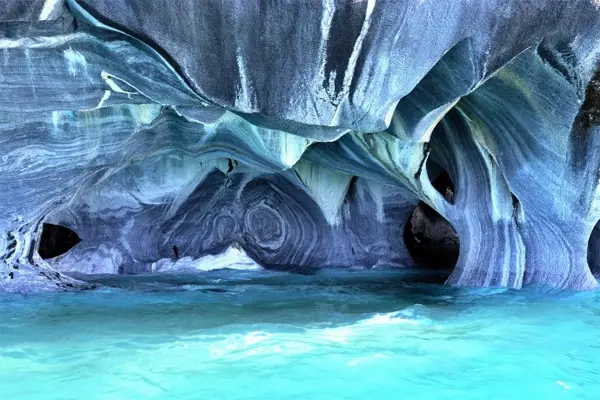
At the same time, seawater also brought blue salt deposits into the cave, creating twisted marble blocks outside and inside the cave. General Carrera Lake’s water source comes from melting glaciers in the Andes Mountains. These water streams contain many small ice particles still suspended in the water. These particles refract light, creating a special effect for the cave.

In spring, the shallow water reflects a turquoise color onto the caves. Rising water levels in the summer turn the water a darker blue color. Sometimes, reflections can also produce white, gray or even pink colors. It can be said that it is the unique natural beauty of the marble cliffs and the beautiful blue water that gives this cave a special attraction to tourists from all over. Many people come here to be able to feel the difference in environment and color on the cliffs when admiring the scenery around the Marble Cathdral marble cave at different times of the year. The unique beauty of this cave also creates endless inspiration for international photographers to visit and create many wonderful works of art.
12. Natural stone field, Tasmania
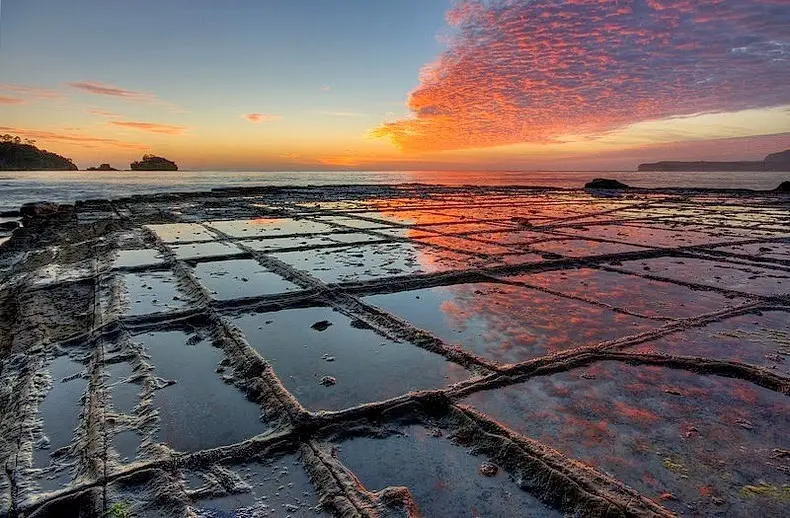
The rock layers on the Tasmanian coast are formed into almost perfect rectangles. The rocks were broken down millions of years ago when tectonic plates slid over each other, forming a series of almost perfectly straight cracks. The flatness of this rock surface is explained by scientists as being caused by waves carrying sand and gravel to erode it or by a process related to the chemical reaction of sea water. Accordingly, the rocks absorb seawater during high tides and become dry during low tides. Meanwhile, salt crystals remain on the rock surface, accumulating high and then disintegrating the rocks – a process that forms shallow basins.
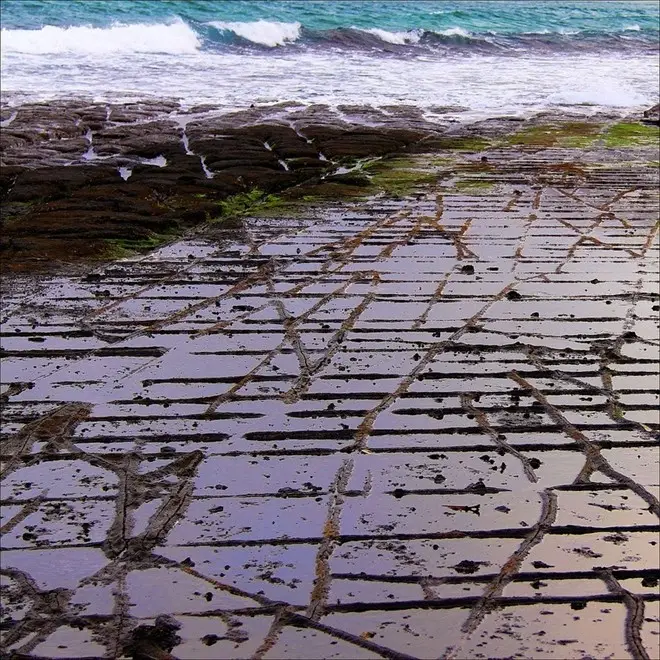
At Eaglehawk Neck there are two types of rock formations: basin and loaf. A basin is a series of depressions in rock, often forming at the edge of a coastline. The rock on this edge is often bathed during high tides, and when the tide is low, the rock surface becomes dry with a huge layer of salt. Therefore, the rock layer here is easily eroded, creating depressions more and faster than the rock inside. The loaf form appears on the rocks close to the coast. In this area, rocks are soaked in seawater for a longer period of time than rocks at the edge of the coast.
That’s why the rock here cannot dry, limiting the salt crystallization process. In addition, seawater carrying abrasive sand is constantly pushed through the cracks, causing them to erode faster than the rest of the rock mass near the shore, leaving behind a rock structure that resembles a loaf of bread. protrude, bulge.
13. Eye of the Sahara: Unraveling the Enigma among the Strangest Natural Wonders in the World
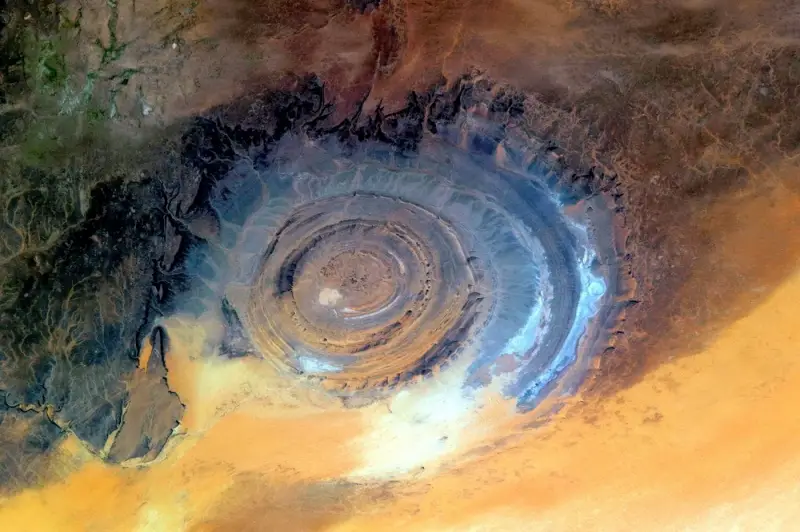
Officially known as the Richat structural block. The rock structure inside the Sahara is also known as the eye of the Sahara . It is located in Mauritania west of the Sahara desert. The structure spans 40 kilometers in diameter, shaped like a giant eyeball. Humans have been unaware of the eye-shaped structure’s existence for millennia due to its massive and mysterious appearance, making it difficult to recognize from the ground. People only really know about this mysterious wonder when humanity makes progress in flying into space. Researchers once thought that the Eye of the Sahara could be an impact crater of an alien celestial body. However, they could not prove this hypothesis because no melted rock was found.
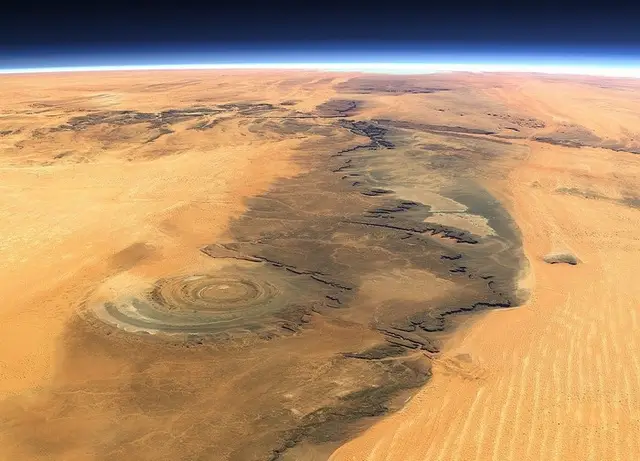
Sedimentary rock blocks make up an outer shell. Inside, erosion is stronger in the Quartzite rock layers, creating fragile rounded slopes. At the central location, the “Eye of the Sahara“ is covered by a layer of rubble with a total radius of up to 3km. Many hypotheses have been proposed about the formation of this beautiful structure. Some scientists speculate that Richat is caused by volcanic eruptions or a meteorite impact millions of years ago. Others believe that this is the remnants of the mysterious Atlantic continent that has disappeared for many years. However, until now, there has been no exact answer about the appearance of this strange structure.
14. Giant Causeway coastline, Ireland
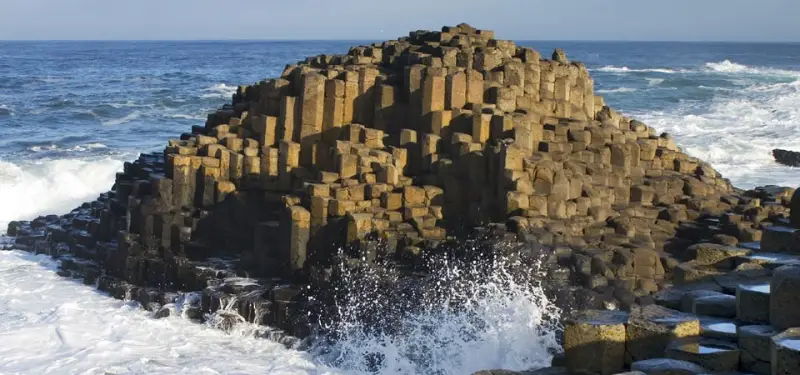
The Giant Causeway is located in County Altrim, on the north-east coast of Northern Ireland, 4.8 km north-east of Bushmills. This coast attracts a lot of tourists and geological researchers who come here to explore not only because of its strange beauty but also because there are about 40,000 giant black basalt columns arranged neatly, connected together. the result of an ancient volcanic eruption. Stone pillars arranged together form steps leading from the cliff and slowly leading down to the sea and disappearing into the sea. Most of the stone pillars here are hexagonal, although some also have four, five, seven or eight sides. The highest column reaches 12m, in particular, at cliffs up to 28m high, there is also solidified lava.

Take in the majestic views of the coastline and watch for native seabirds flying in the sky close to the shore in search of fish. If you come in the fall, the seal breeding season, you will have a rare opportunity to see this shy animal firsthand when it appears on the coast. The area is also home to many rare plant species, another reason to attract nature-loving tourists to the Bay of Giants. Organize a picnic lunch amid the majestic scenery and in the fresh air of the coastal region. Be sure to stop by the Visitor Information Center to learn about the region’s history, mythology and the native ecology of Northern Ireland. Visitors can go to the Bay of Giants at any time of the year. The bay is located right on the edge of Bushmills, close to the north coast of Northern Ireland.
Exploring 14 The strangest natural wonders in the World has unveiled a realm of mystery and wonder. From eerie caves to mystical landscapes, these destinations symbolize the power and uniqueness of nature. We hope this article has provided you with valuable information!


